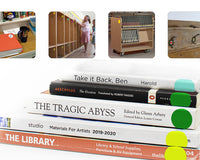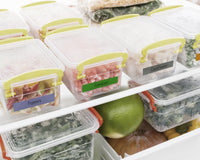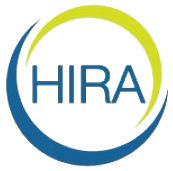
Learning to stay organized is a skill that often takes years of practice. Even as adults, we still might struggle to keep track of our goals and our things from time to time. For academic leaders looking to provide the best tools for helping students stay organized in their schools, this brief guide will suggest great opportunities to teach kids to keep track of their work using visual and tactile systems.
Keeping Track of Paperwork
Keeping track of paperwork is one of the more tedious events in a classroom. Even as we transition more and more towards digital files, schools continue to rely on paperwork to help students with limited access or technological experience. Providing a tactile option also benefits many kids who struggle to look at screens or learn in a digital setting, so ruling out paperwork entirely is a difficult process.
Making sure that teachers and students have the tools to keep homework, packets, and readings organized and accessible helps each day in the classroom run a bit more smoothly.
Inboxes, File Folders, and Binders
File folders and binders are a go-to for many classrooms and a great way to keep from losing paperwork. Though more costly, including plastic sleeves or dividers helps students structure their binder and keep track of the work for each day. Choosing to keep these organizational tools in the classroom is ideal when you have the space, as it’s much easier for work to go missing at home.
How students turn in work is another opportunity for organization in the classroom. Setting up an inbox system with baskets, wall racks, or bins signals to students where their work needs to end up and makes a teacher’s life easier too.
A Filing System That Works
One way to make paperwork organization more effective is to create a filing system appropriate for the class’s age and experience. Including names on binders, keeping labels on bins, or color-coding class supplies consistently throughout the year helps children understand the expectations and act with more independence, aiding in their confidence.
Sticking to an Agenda
Teaching students how to incorporate a schedule into their academics is a challenge. Each student has an individualized learning style and a unique ability to adhere to and respond to deadlines. Therefore, the challenge of giving them the tools to stick to an agenda and make good progress requires a personalized solution. Here are some tools that give students the power to create an agenda that works for them.
Physical vs. Digital Agendas
Children of any age can use agendas and schedules, but the style of agenda your classrooms implement should reflect how your kids can and will respond. Both physical and digital agendas have advantages.
Digital agenda apps and schedulers are great for older students well-equipped to incorporate technology into their daily planning. Phone alerts, timers, and reminders are all built into these apps, and they also boast a certain amount of flexibility and analytics that don’t come with physical agendas. However, digital agendas are easy to ignore, and typing a task into a phone might not create the same sense of responsibility to complete it as physically writing it does.
Physical agendas may not have all the fancy gadgets and notifications, but they are often effective. Printed paper versions also give teachers and parents a way to see the goals their child is setting for themselves and discuss what they are or aren’t accomplishing. An app, on the other hand, can have the content edited. Paper agendas are also less overwhelming for students inexperienced with technology and take less time to teach than new applications.
Planner Personalization and Templates
Another benefit of physical planners comes in the form of personalization opportunities for students. Bringing their own style into an agenda is important for students of any age, as having a tool built by and for themselves will motivate them to implement it in the classroom. Allowing students to add stickers and drawings, tape in notes, or write in it as they see fit are all ways to allow their self-expression, so long as they aren’t distracted from the agenda’s intended function.
Providing students with a template or multiple examples of how to begin structuring their agenda is beneficial for students who haven’t used these kinds of tools before. How they use their agenda may change over time but creating a baseline and demonstrating how to use an agenda sets a child up for success.
Organizing Groupwork
A fun way to assign younger and older students group work is via color-coding. Marking desks, tables, or packets with a color-coded sticker gives them the easy but light-hearted task of finding their group members and stations around the classroom.
The same color-coding technique helps keep track of packets or group projects that change hands or teachers need to reuse for later classes.
Measuring Progress
This organization isn’t limited to keeping track of physical items. Creating a visual indicator allows students to reflect on their progress in the course and more easily understand why adults suggest changes. Some students might even consider visual progress as motivation to keep trying and keep growing in the classroom.
One way to provide a great visual to students as to their level of completion in the course or their growth is to create an individualized bar graph. You can use pieces of colorful tape or stickers to make a fun representation of their improvement. Allowing students to watch the graph or involving them in the process can also add a sense of responsibility and control that makes the process seem less arbitrary.
Teachers can make these charts individualized, private, or pertain to the entire classes’ growth through the year!
One of the most versatile tools for helping students stay organized is removable colored tape. Chromalabel’s colored tape is easy to write on and remove, making it ideal for classrooms that don’t want to change supplies semester to semester. We proudly offer our colored adhesive tape in a wide range of colors, allowing you to effectively implement this great labeling tool across the classroom, from chart creation to agenda personalization and beyond!










